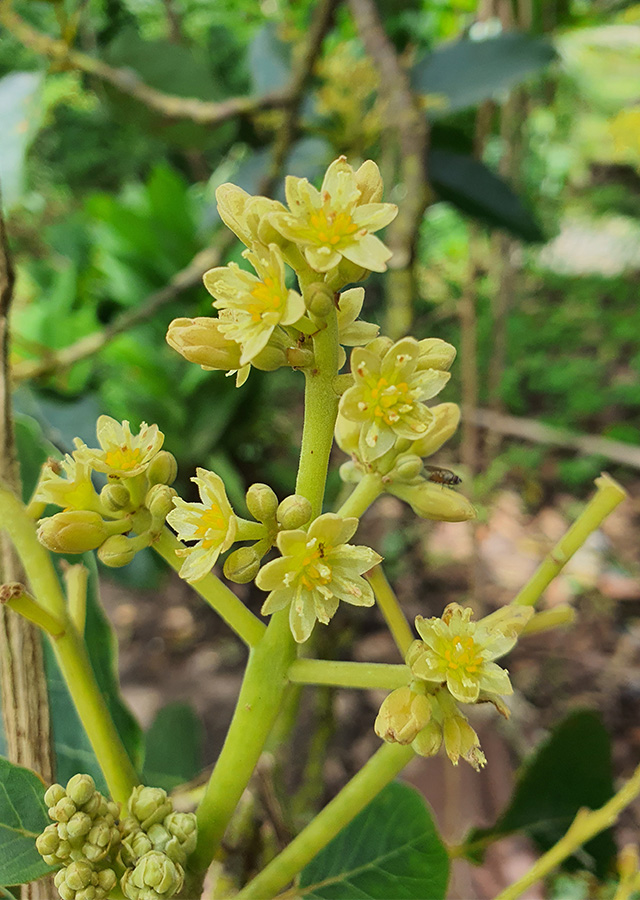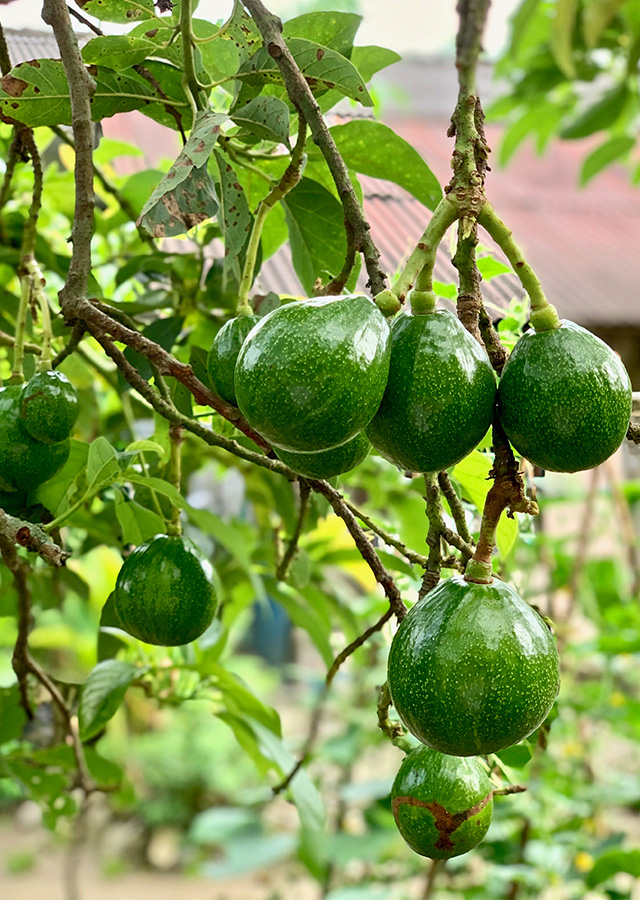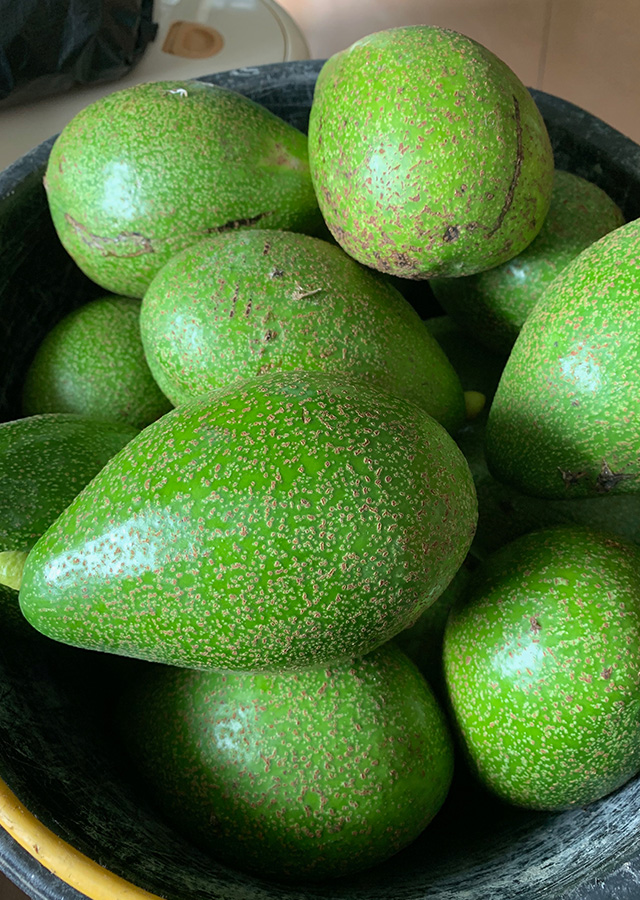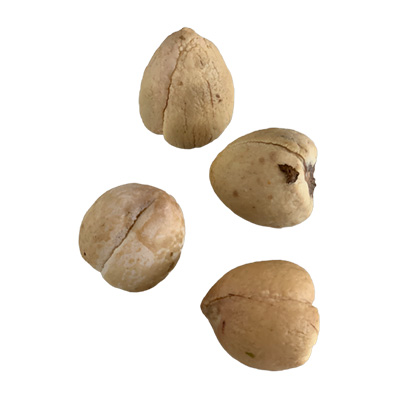Avocado
Persea americana Mill.
Lauraceae
Location in our garden
Orchard



Synonym
Laurus indica Sieber ex Nees
Laurus persea L.
Persea drimyfolia Schltdl. & Cham.
Habitus
Trees. An evergreen perennial tree, woody, shaped like a dome, can reach heights of 20 m
Part Used
Leaves
Seeds
Bark
Fruit
Stem
Growing Requirements
Full Sunshine
Habitat
Forest
Overview
The area of origin of avocado is in Central America – possibly Mexico, Guatemala and Honduras. In countries all over the world, the fruit is highly valued and found for sale. The tree is also admired for the oil it provides and for its many medicinal uses. The tree is grown widely in regions that are tropical and sub-tropical.
Vernacular Names
E li (Chinese), Avocatier (French), Abokado (Japanese), Ah bo k'a do (Korean), Abukado (Philippines), Cura (Spanish), Awokhado (Thai), Bó, le dau (Vietnamese), avokado, apukado (Malaysia), bata (Phillippines), avokas (Cambodia), awokado (Thailand), adpukat, avokad (Indonesia).
Agroecology
Avocados grow from sea level up to 2,250 m altitude on soil types such as red clay, sand, lateritic soils, or calcareous. A well-drained aerated soil is needed because the roots are intolerant of anaerobic and saline conditions. The optimal pH range is 5 to 7, the average annual temperature is -4 to 40 °C, and the average annual precipitation is 300-2,500 mm.
Morphology
- Roots - Primary roots anchorage penetrate to 3-4 m, but tree is largely supported by a shallow (to 0,5 m) unsuberized secondray root systems. Stem - 30–60 cm across with grey-green longitudinally fissured bark.
- Leaves - spirally arranged, simple and entire, variable in shape and size, petiole 1,5–5 cm, blade elliptic to lanceolate, ovate or obovate, 5-40 cm x 3-15 cm, reddish when young., turning dark green, waxy above, glacoush beneath, with prominent midrib and veins.
- Flowers - yellow-greenish, 5–6 mm on 6 mm densely yellowish brown pubescent pedicels.
- Fruits - a large fleshy berry,yellow-green, deep-green or very dark-green, reddish-purple, or so dark a purple as to appear almost black. Usually pear-shaped, sometimes ovoid or globose, mesocarp, bright-green fleshy, but generally entirely pale to rich-yellow, buttery and bland.
- Seeds - single-seeded. 7-20 cm long, hard and heavy.
Cultivation
- Generative propagation occurs by seeds.
- Vegetative propagation through rooting avocado cuttings, layering, and grafting.
- Propagation by cuttings is a more precise process, as a clone of the parent tree results in the propagation of a new tree from avocado tree cuttings.
Chemical Constituents
Flavonoids, glycosides, alkaloids, tannins, saponins, terpenoids, steroids, phenolics, carotenoid, 1,2,4-trihydroxyheptadec-16-yne, riglyceride, volatile oil (methylchavicol, pinene), cyanogenic glycosides.
Traditional Medicinal Uses
Medicinal Uses
- The pulp of the fruit is emollient, carminative and helps lower levels of blood cholesterol.
- The bark is astringent, carminative, antitussive, and emmenagogue.
- It is used to alleviate coughs, lower blood pressure, treat hepatic obstructions, stimulate menstrual flow and clear the body of high uric acid levels that may lead to gout.
- Steroids that are used for pharmaceuticals are present in the oil from the seeds. There are astringent properties of oil extracted from the plants.
- The pulp is thought to encourage menstruation.
Traditional Uses
- Dysentery is treated with an oral infusion of the leaves; it is chewed as a pyorrhea treatment, leaf poultices are applied to wounds, heated leaves are applied to the forehead to alleviate neuralgia.
- The seed is ground and made into an ointment used to treat various skin problems such as scabies, purulent wounds and dandruff; to alleviate toothache, seed decoction is inserted in a tooth cavity.
Part Used
Reference Sources
- Whiley, A.W. 1992. Persea americana Miller. In: Verheij, E.W.M. & R.E. Coronel (Editors). Plant Resources of South Asia. No. 2: Edible Fruits and Nuts.Prosea Foundation, Bogor, Indonesia. p 249-254.



